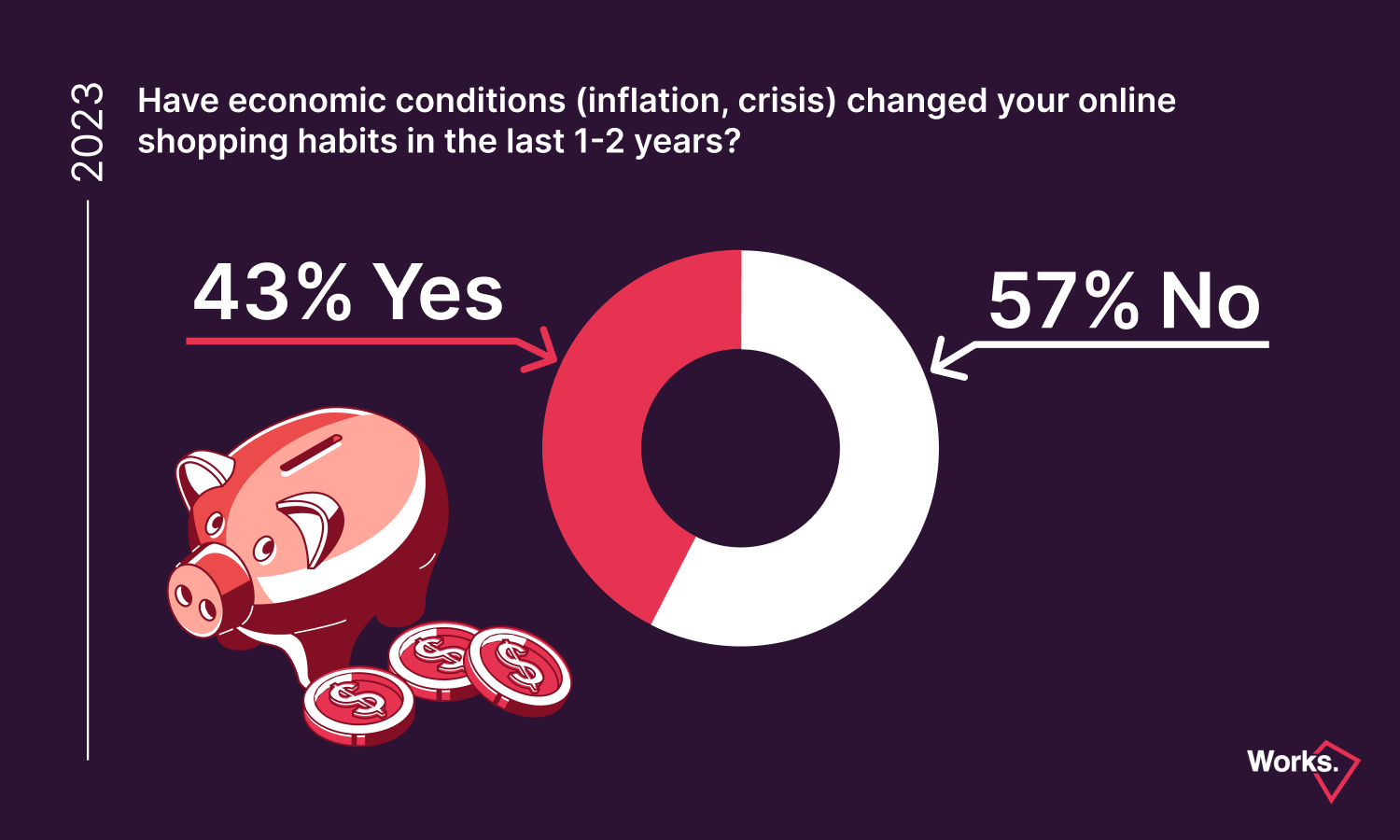The Economic Effects of COVID-19
Online Shopping & Delivery — Part 2
Research of the Hungarian market
In recent years, everyone has experienced how the world of online shopping has changed our lives. The exponential growth of online purchases and the widespread use of online platforms have created new opportunities for businesses, while providing consumers with convenient and fast access to a wide range of products and services.
Based on our research into online order delivery, in this series of articles we will present users' expectations and experiences of online order payment, delivery and communication during the process.
A non-representative online questionnaire, in-depth interviews and desk research preceded this article. In our questionnaire survey, we interviewed participants between the ages of 16 and 75.
Online Shopping & Delivery Series
We introduce the preferred payment methods among customers. We explore the criteria they use to make decisions and their attitude towards the increasingly popular virtual card payments.
#2 — The economic effects of COVID-19
We discuss the economic impact on online shopping. We look at whether the change in shopping habits during the Covid period has continued, and we outline how the growing inflationary environment may influence users' decisions regarding payment and delivery methods.
In this article, we take a look at customer feedback on different delivery methods and preferences. We also discuss how the choice of delivery method by product category influences customers, as well as what they think about environmentally friendly delivery methods.
From the moment of ordering, the status of the ordered products and communication related to pickup are crucial. In this article, we have focused on which messages and notifications are considered important by customers.
In this article, we discuss customers' perceptions of the safety of online shopping, what items they return, and their fears and expectations of shopping on international websites.
The pandemic has rearranged our everyday lives
The Covid period resulted in a shift in shopping habits for many consumers, with contactless and digital solutions taking the lead. Our research aimed to determine whether the methods experimented with by users are now a part of their consumer behaviour, or whether they have reverted to their previous habits.
Due to the pandemic, people had to adapt to restrictions, social distancing and confinement, which also changed their shopping habits and preferences.
As a result of the pandemic, shoppers wanted to avoid crowded places and social interaction. This led to a surge in online shopping across all sectors, ranging from food to clothing to electronics. For instance, even for groceries, an increasingly large number of people chose to order online to minimise the risk of virus transmission.
During this time, there was a significant increase in demand for disinfectants, masks and other health products as people became more aware of their hygiene habits. Consequently, online shopping and contactless collection proved to be excellent alternatives for those wishing to do everything possible to curtail the spread of the virus.
As the virus subsided, shopping habits changed again. While some reverted back to shopping in brick-and-mortar stores and curtailed their online orders, a considerable number of customers continued to indulge in online shopping for its convenience and even for small-scale purchases. Additionally, buying products online remains popular for products that are difficult to find in physical stores.
The effects of Covid-19 on online shopping habits
1.chart: Effect of Covid on Online Shopping Habits
More than half of the respondents reported no significant change in their online shopping habits due to the Covid pandemic. 14% of the respondents have returned to their previous ordering habits, while a third of the respondents continue to maintain the habits introduced during the Covid period with regards to online shopping.
Covid-19 made room for the use of new forms of payment
2.chart: Effect of Covid on Payment Method Selection
From the data, it's evident that due to the impact of Covid, 27% of the respondents have made changes in the payment methods used for online orders in some form and continue to prefer using them. Examples include contactless payments, paying at the time of online order placement, or using payment methods not previously employed.
We were also curious about whether our respondents had adopted new habits as a result of Covid. From our interviews and conversations, we learned that since Covid, shoppers are shopping online and ordering food more often than they did before the pandemic.
Effect of Covid on Delivery Methods
3.chart: Effect of Covid on Delivery Method Preference
Delivery methods have also changed as a result of the Covid-19 pandemic. Around 45% of our respondents said that their delivery habits had changed. Typically, they order more online and minimise encounters with people in crowded places. It's common for them to use less cash, so users are handling the tipping of the delivery person by arranging it online. From the results of our 45% respondents, 22% prefer using package lockers, 18% opt for home delivery, and 5% prefer delivery to pickup points since the beginning of the pandemic.
Economic impacts
In recent years, shopping habits have been influenced not only by Covid-related restrictions and associated consumption patterns but also by the uncertain economic situation exacerbated by high inflation.
When we shop in the stores or pay our bills, we can personally experience the constant rise in prices. It affects every consumer. While physical retailing has typically seen a decline due to steady price increases, e-commerce has seen a shift towards lower-priced products, with no significant decline in the premium market.
4.chart: Effect of Inflation on Online Ordering Habits
The impact of inflation on online shopping habits affected 43% of respondents. Price increases also drove awareness and pre-purchase information in the case of online shopping
5.chart: Effect of Economic Changes on Online Ordering Habits
The economic changes have made people more cautious about their spending, resulting in fewer impulse purchases and more consideration about whether they really need a particular product. When they do need something, they no longer order the first product they come across online, but compare prices across multiple webshops to find the most favourable basket value.
Similar changes in attitude were observed during the interviews. Respondents said they now compare prices more often and pay more attention to products that are close to expiry. These products are not only cheaper because they are close to their expiry date, but also contribute to sustainability. In addition, respondents said they were open to buying alternative products instead of their preferred brands to save money, such as in the case of cosmetics. Cost minimisation has also become a focus for online ordering, with 15% of respondents looking for cheaper or even free payment options when making a purchase. Similarly, 15% said they were buying less online due to bad economic conditions. 10% of respondents even postpone certain online purchases.
In recent times, consumers have felt the increase in delivery costs and are looking for cost-effective delivery solutions. Many are opting for alternatives such as collection from delivery points or stores rather than home delivery. If the delivery cost for a chosen online product is high, consumers are willing to pick up the product in-store to save on the cost.
Seasonal shopping
End of season sales, Black Friday, clearance sales, holiday promotions - the list goes on. Pre-holiday discounts and promotions continue to be popular with shoppers. 53% of respondents have shopped during these periods, with 26% regularly shopping during discount events. Only 20% said they do not shop before holidays or during sales.
In the user interviews, respondents said that they try to shop in time for Christmas – rather than leaving it to the last minute – as they expect their online orders to arrive more slowly at this time of year. Customers are also more accepting of longer delivery times. In such cases, the lack of information is more annoying than having to wait longer for a particular product.







